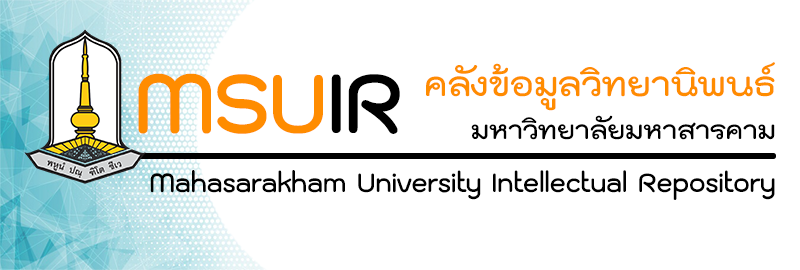Please use this identifier to cite or link to this item:
http://202.28.34.124/dspace/handle123456789/2608| Title: | Developing instructional model to enhance Japanese reading comprehension skills and attitude toward reading among university students Developing instructional model to enhance Japanese reading comprehension skills and attitude toward reading among university students |
| Authors: | Mingming Liu Mingming Liu Jiraporn Chano จิระพร ชะโน Mahasarakham University Jiraporn Chano จิระพร ชะโน jiraporn.j@msu.ac.th jiraporn.j@msu.ac.th |
| Keywords: | Developing instructional model, Enhance Japanese reading comprehension skills, Enhance attitude toward reading, University students Developing instructional model,Enhance Japanese reading comprehension skills,Enhance attitude toward reading,University students |
| Issue Date: | 14 |
| Publisher: | Mahasarakham University |
| Abstract: | This research aimed 1) to investigate the current problems in reading comprehension and attitude toward reading for the Japanese language in the context of university students. 2) to develop an instructional model to enhance Japanese reading comprehension skills and attitude toward reading among university students. 3) to study the results of using the instructional model by means of reading comprehension skills. (3.1) to compare pretest and posttest scores in both control and experimental groups. (3.2) to compare the posttest score of the experimental group and control group. 4) to study the results of using the instructional model by means of attitude toward reading. The research methodology was divided into 3 phases. Phase 1 focused on the current problems of implementation of Japanese reading. The participation consisted of books and articles, 66 students, seven teachers, and five experts. Phase 2 construct the tentative model. Phase 3 study results implement the model. The target population consisted of 72 students. Study to students had a positive attitude toward reading and evaluation of the model.
The results of the research were as follows. (1) The current problems are students cannot read long sentences in Japanese. Students lack knowledge of vocabulary and grammar, as well as the awareness of understanding sentences. Students' attitude towards Japanese reading is negative. (2) The CLAS model includes focus, rationale, syntax, social system, support system, and application and effects. (3) The CLAS model enhanced Japanese reading skills among university students. (3.1) The posttest score in the control groups is more than the pretest score. The posttest score in experimental groups is more than the pretest score. (3.2) The posttest scores of the experimental groups are more than the control groups. (4) The CLAS model enhanced attitude toward reading among university students. This research aimed 1) to investigate the current problems in reading comprehension and attitude toward reading for the Japanese language in the context of university students. 2) to develop an instructional model to enhance Japanese reading comprehension skills and attitude toward reading among university students. 3) to study the results of using the instructional model by means of reading comprehension skills. (3.1) to compare pretest and posttest scores in both control and experimental groups. (3.2) to compare the posttest score of the experimental group and control group. 4) to study the results of using the instructional model by means of attitude toward reading. The research methodology was divided into 3 phases. Phase 1 focused on the current problems of implementation of Japanese reading. The participation consisted of books and articles, 66 students, seven teachers, and five experts. Phase 2 construct the tentative model. Phase 3 study results implement the model. The target population consisted of 72 students. Study to students had a positive attitude toward reading and evaluation of the model. The results of the research were as follows. (1) The current problems are students cannot read long sentences in Japanese. Students lack knowledge of vocabulary and grammar, as well as the awareness of understanding sentences. Students' attitude towards Japanese reading is negative. (2) The CLAS model includes focus, rationale, syntax, social system, support system, and application and effects. (3) The CLAS model enhanced Japanese reading skills among university students. (3.1) The posttest score in the control groups is more than the pretest score. The posttest score in experimental groups is more than the pretest score. (3.2) The posttest scores of the experimental groups are more than the control groups. (4) The CLAS model enhanced attitude toward reading among university students. |
| URI: | http://202.28.34.124/dspace/handle123456789/2608 |
| Appears in Collections: | The Faculty of Education |
Files in This Item:
| File | Description | Size | Format | |
|---|---|---|---|---|
| 61010563009.pdf | 3.7 MB | Adobe PDF | View/Open |
Items in DSpace are protected by copyright, with all rights reserved, unless otherwise indicated.

